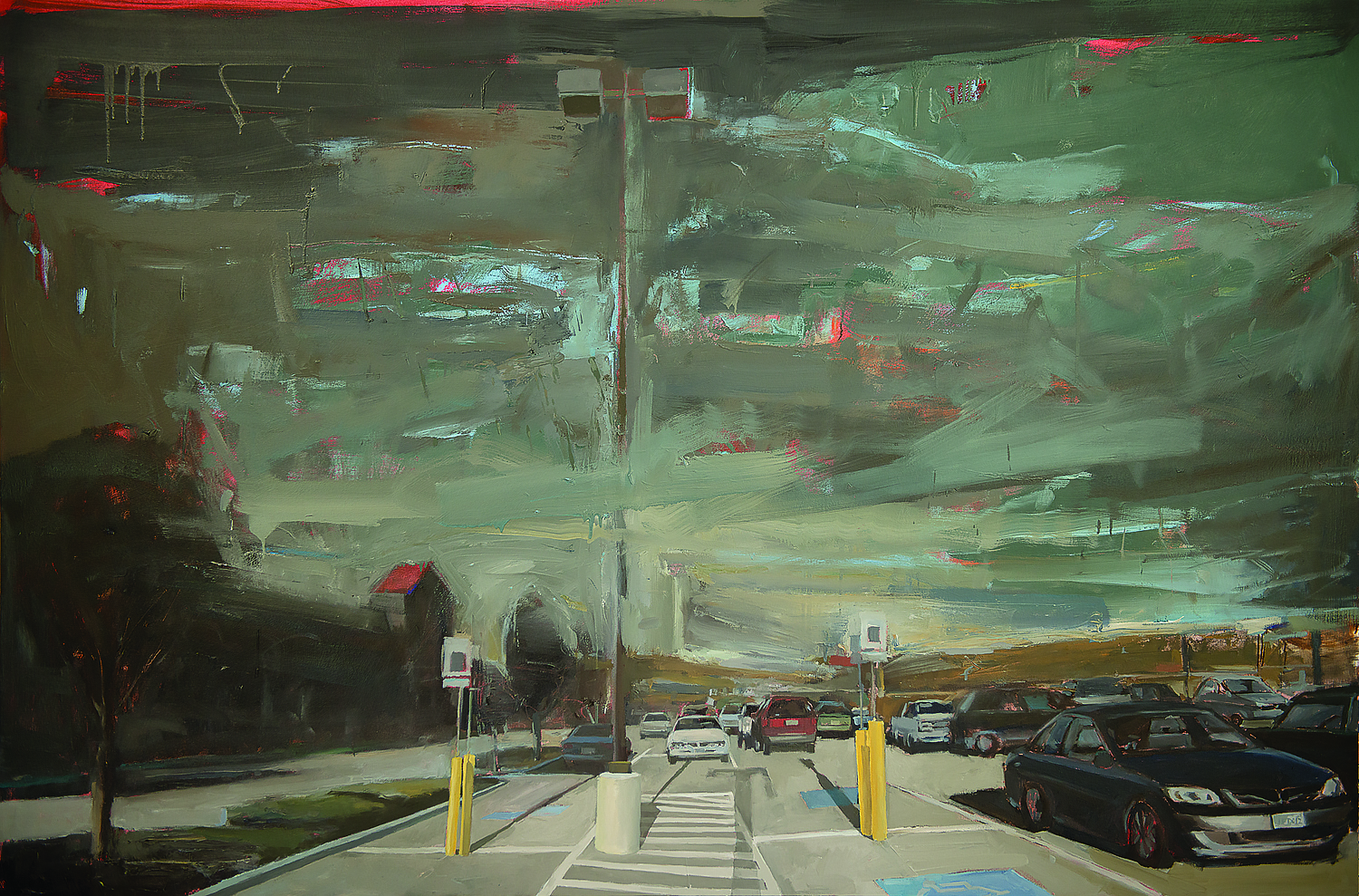

Charles Goolsby's painting Target is part of the From These Hills exhibit.
Charles Goolsby is a landscape painter whose work explores the historical and theoretical underpinnings of landscape painting and a changing environment.
“I see the results of landscape painting as a synthesis of memories, affective responses, logics and physical processes resulting in reflection and understanding. In essence, my paintings are visual interpretations of complex intersections of experience and sensory stimuli.
“I explore paintings as physical objects — metaphorically a skin stretched over bones — and simultaneously as an image — a liminal port in which one travels through — coming out of the experience transformed in some way.
“I have a lot of experience with painting. I also have a lot of experience in printmaking, drawing and photography. People are to some degree used to thinking of painting as art. So, it becomes a conceptual entrance to get an audience engaged with something that is within their familiar understanding of art. Nevertheless, when it is more appropriate to explore my ideas in other mediums, I do,” Goolsby says.
Many of his landscapes are influenced by the Southern Highlands. He will pursue territories outside the region but thinks it’s natural to think about the accustomed surroundings. “I discover a lot of imagery within my daily life. It’s where I live,” he says.
Because it’s where he lives, his concern for the environment shows through in his art.
“What we do with our environment is a concern of mine. We alter it to suit our needs. We carve our spaces up, subdivide them, exploit them, pave them and abandon them when the economic production of the space is no longer generating revenue. We consume our environment to the point of altering climate, which will have an impact in a more complex way when considered within a global context. Over time, the weather conditions imagined in my works are gradually becoming less fictional in reality.
“Individually, humans are always situated in specific geographic spaces; however, there are occasionally points in our environments where we experience internal revelations from external spaces. These places and experiences reveal for me as an artist a strong perception of place combined with an affective bond with that environment. Humans develop emotional and cognitive ties to places. Specific places constantly change in time. As these places undergo transformations, we also adjust our perceptions, memories and expectations. Landscapes are often subject to destruction and disintegration; they can also be recreated and reshaped by human intervention. The changes in our environment also relate to the processes of art making and painting, specifically painting,” he says.
Goolsby has been in the “From These Hills” exhibit before and enjoys having an opportunity to share his work in the region that inspired it.
“I want audiences to initially engage with the work because it seems like a familiar space. Next I want them to question the anxieties and uncertainties generated through my design and execution. I want them to experience some of the revelation that we can feel when ordinary things become extraordinary. Viewers may or may not be transformed in the same way that I am as an artist, but I hope they can go back to a location that maybe we take for granted and see something deeper,” he says.
Goolsby is a professor of art at Emory & Henry College and chair of the division of visual and performing arts. He has been a practicing professional artist for more than 40 years. He earned his B.F.A. in art from Radford University and the M.F.A. in art from James Madison University. His work has been featured in more than 45 solo exhibitions throughout the southeastern United States at various college, university, fine arts center, museum and commercial galleries. Blue Spiral I Gallery, in Asheville, North Carolina, represents him. His work has received awards in numerous regional and national juried exhibitions throughout the United States.
Goolsby’s honors include fellowships from the Virginia Museum of Fine Arts, the Ucross Foundation, the Vermont Studio Center, the Virginia Center for the Creative Arts and the Marie Walsh Sharpe Foundation.
He was selected as a resident associate artist by the Atlantic Center for the Arts in Florida where he worked with internationally acclaimed artist Donald Sultan. In 2012 he was selected as a Fellow at Virginia Center for Creative Arts-France at Le Moulin à Nef, a studio center in the Gascon village of Auvillar. In 2019, Goolsby completed a residency at the CitéInternationaledes arts inParis and returned to the Vermont Studio Center with a full fellowship. In 2015 the Arts Alliance of the Mountain Empire awarded Goolsby an Arts Achievement Award for his significant contribution as a studio artist and teacher to the region of Southwestern Virginia.
His work is included in a number of public and corporate collections throughout Virginia and North Carolina. In August of 2010, three of Goolsby’s oil paintings were included in the highly selective journal, New American Paintings. One of Goolsby’s paintings was featured in Oxford American Magazine’s Fall 2005 issue on Southern Art and Architecture. His art appeared on the April 1989 cover of School Arts Magazine.
Partly informed by traditions from 19th-century American landscape painting, Goolsby transforms 21st century environment into ambitious oil paintings that celebrate beauty and monumentality. He and his family live near Emory, Virginia, where he continues to work in his studio.
There's more.